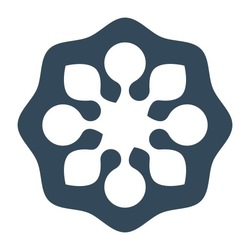Bending Rules: Les Carmes Haut-Brion 1955-2019
Château Les Carmes Haut-Brion
Pessac-Léognan Red Bordeaux Blend 2017
The 2017 Les Carmes Haut-Brion comprises 45% whole bunches and matured for two years in 80% new oak plus foudres and amphorae. Complex on the nose, this offers black olive and brine tinged black fruit, crushed stone and light minty aromas, quite intense in the context of the vintage. The palate is medium-bodied with sappy red fruit on the entry, quite Rhône-like in flavour profile, hints of fennel and thyme interwoven into the red fruit, persistent on the finish. Delicious and distinctive. Tasted at the Les Carmes Haut-Brion vertical at the château. (Neal Martin, Vinous, October 2022)
— 3 years ago
Château Les Carmes Haut-Brion
Pessac-Léognan Red Bordeaux Blend 2015
The 2015 Les Carmes Haut-Brion is the first vintage vinified with 100% infusion, including 55% whole bunches. This has a much more intense bouquet compared to the 2014: copious blackberries, blueberry and crushed violet scents, hints of blood orange and a light cassis touch with time. The palate is medium-bodied with fine density and precision, good grip, edgy tannins with clearly more mineralité percolating through the finish. Excellent. Tasted at the Les Carmes Haut-Brion vertical at the château. (Neal Martin, Vinous, October 2022)
— 3 years ago
Château Les Carmes Haut-Brion
Pessac-Léognan Red Bordeaux Blend 2012
The 2012 Les Carmes Haut-Brion was the first vintage with whole bunches (40%) and 18 months in barrel. It was the introductory vintage under current winemaker Guillaume Pouthier. This is much more enticing on the nose after the 2011: well-defined black cherries, cola, peppermint, light rose petal scents and a hint of marmalade that emerges with time. The palate is medium-bodied with sappy black fruit, more freshness and tension than the 2011, and frankly, you would never be able to tell there was whole bunch here. This appears to be maturing with style and panache, but it will give another decade or more of drinking pleasure. Tasted at the Les Carmes Haut-Brion vertical at the château. (Neal Martin, Vinous, October 2012)
— 3 years ago



Delectable Wine

Follow to learn about our favorite wines & people.
The 2018 Les Carmes Haut-Brion was aged in 75% new oak with a touch more matured in foudres. It includes 55% whole bunches. This has a slight confit-like aroma on the nose, plush cranberry and wild strawberry intermingling with cassis and violet; aromatically, this is the more precocious recent vintage. The palate is medium-bodied with sappy red fruit, fine tannins, clean and pure with excellent acidity keeping everything on an even keel towards the finish. The 2018 has a caressing texture and is very persistent. I might quibble and say that I just find the nose a little trop, but the palate is superb. Tasted at the Les Carmes Haut-Brion vertical at the château. (Neal Martin, Vinous, October 2022)
— 3 years ago